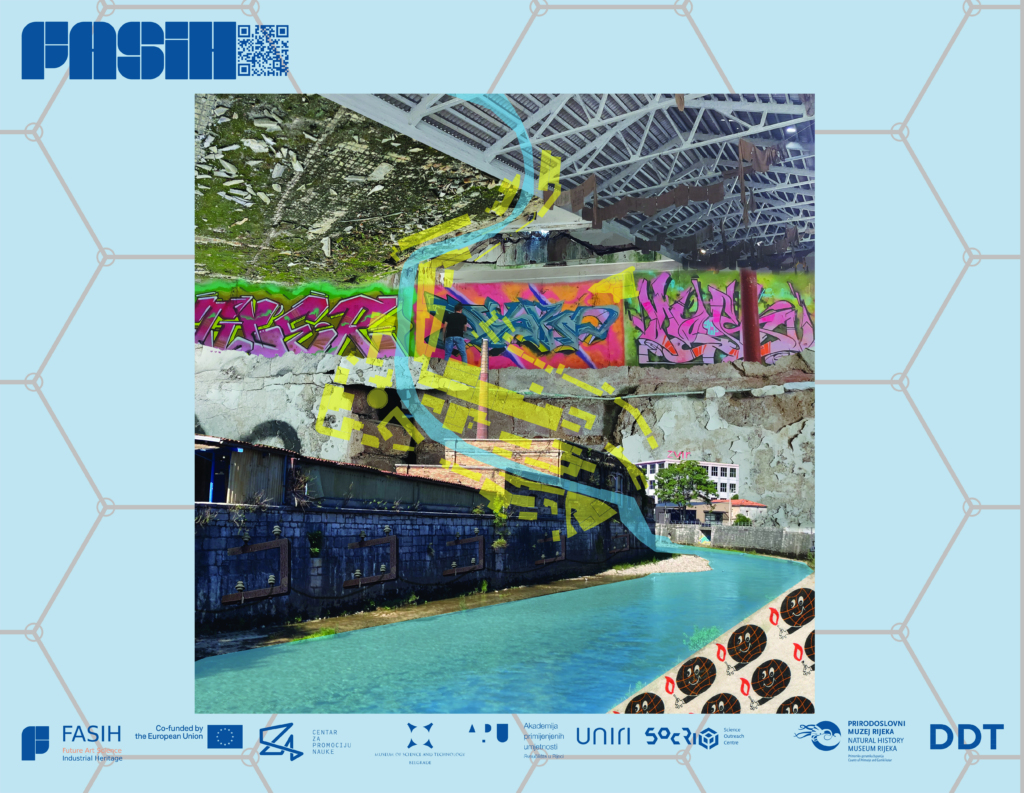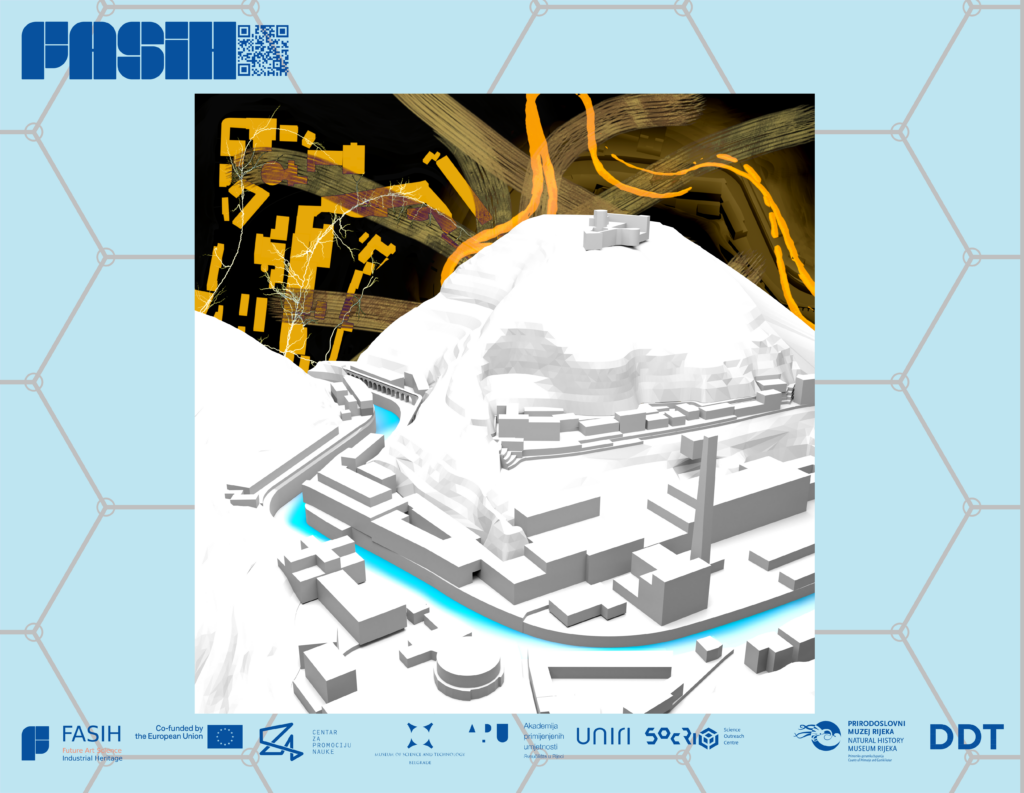Projekt Hartera Priča oslanja se na koncept „Parlamenta stvari“ Brune Latoura, kojim se svaki predmet i živo biće jednakovrijedno sagledava u parlamentu Svijeta. Time se glas dodjeljuje i neljudskim stanovnicima koji potom ulaze u dijalog kroz interakciju s građanima. Parlament pruža nadrealni trenutak kojim se nastoje rasvjetliti kompleksni međuodnosi živoga i neživoga te ih strukturirati na način koji može služiti u daljnjem promišljanju prostora.
Govornici u Parlamentu predstavnici su stanovnika Hartere – biljaka, životinja, ljudske izgradnje, prirodnih fenomena i dr. Kroz razgovor s članovima Parlamenta razaznaje se njihova uloga u prostoru (društvena, biološka, estetska, …). Što bi nam otkrila Rječina o suživotu s florom i faunom te ljudima koji su tokom vremena regulirali njen
vodotok i izgradili tvornicu pokraj nje, a što električni vodovi čija je mreža nekada bila pulsirajući krvotok energije kroz kompleks tvornice, a sada je pod tek tinjajućim naponom? Što bi rekli korov, bjelonogi riječni rak, otpad, šibica, …?
Kako bi se ostvarila komunikacija sa stvarima-sugovornicima, provedeno je istraživanje njihovog objektivnog položaja u kontekstu prostora. Sagledavanjem i uočavanjem fenomena i međuodnosa stvari koje čine kompleks razlučene su teme toka, energije, slojevitosti, krhosti, umrežavanja, materijalnosti i misterija. Kroz razgovore sa
stručnjacima iz područja urbanizma, ekologije, povijesti i sl. autori su se približili prevođenju njihovog govora, odnosno razgovora – koja je njihova uloga, što žele, koji stav zauzimaju u kontekstu vremena i prostora između Hartere i Rječine?
Konačni postav, odnosno, svojevrsno zasjedanje Parlamenta stvari je prostorna instalacija od 9 zastupnika istraživanog obuhvata ‘’suprostavljenih’’ u kružnoj formi koja anulira međusobnu hijerarhiju te ih tretira kao jednake sugovornike. U sredini instalacije prikazane su vizije budućnosti promatrane sa stajališta pojedinih sugovornika
preklopljene s trodimenzionalnim prikazom stvarnog prostora Hartere, rezultat čega je multimedijska karta izvedena tehnologijom mapiranog projiciranja. Projekcija predstavlja interpretaciju glasova stvari-sugovornika, a dovođenjem stvarnih artefakata u prostor prilikom prezentacije projekta njoj je suprostavljena fizička manifestacija Parlamenta – stvar/objekt – u nastojanju da se „pravi glas“ razdvoji od njegove ljudske interpretacije.
Autori:
Ana Komadina
Lea Mioković
Vili Rakita
Mihaela Sladović
Andrea Stanić
Suradnik:
Maxime Weinmann (konstrukcija)


The Hartera Story project relies on Bruno Latour’s concept of the “Parliament of Things”, by which every object and living being is viewed as equally valuable in the parliament of the World. This gives a voice to non-human inhabitants who then enter into a dialogue through interaction with citizens. The Parliament provides a surreal moment that seeks to illuminate the complex interrelationships of the living and the non-living and structure them in a way that can serve to further reflect on the space. The speakers in the Parliament are representatives of the inhabitants of Hartera – plants, animals, human construction, natural phenomena, etc. Through conversations with the members of the Parliament, their role in the space (social, biological, aesthetic, …) is discerned. What would Rječina reveal to us about coexistence with flora and fauna and the people who over time regulated its waterway and built a factory next to it, and what about the electrical lines whose network was once a pulsating bloodstream of energy through the factory complex, but is now only under smoldering voltage? What would you say weeds, crayfish, trash, matches, …?
In order to achieve communication with the things-interlocutors, a study of their objective position in the context of space was conducted. By observing and noticing the phenomena and interrelationships of the things that make up the complex, the themes of flow, energy, layering, fragility, networking, materiality and mystery were distinguished. Through conversations with experts in the fields of urban planning, ecology, history, etc., the authors came closer to translating their speech, or rather their conversation – what is their role, what do they want, what position do they take in the context of time and space between Hartera and Rječina?
The final setup, or rather, a kind of session of the Parliament of Things, is a spatial installation of 9 representatives of the researched scope, ‘opposed’ in a circular form that annuls the mutual hierarchy and treats them as equal interlocutors. In the middle of the installation, visions of the future are shown from the perspective of individual interlocutors, superimposed with a three-dimensional representation of the real space of Hartera, resulting in a multimedia map created using mapped projection technology. The projection represents an interpretation of the voices of the interlocutors, and by bringing real artifacts into the space during the presentation of the project, the physical manifestation of the Parliament – the thing/object – is opposed to it in an effort to separate the ‘real voice’ from its human interpretation.
Authors:
Ana Komadina
Lea Mioković
Vili Rakita
Mihaela Sladović
Andrea Stanić
Contributor:
Maxime Weinmann (construction)